Silva’s Spectra A front light has a claimed 10,000-lumen output, generated by eight XLamp Cree XHP50.2 LEDs, nestled behind LEDil lenses fitted to a square 225g head unit.
Retailing at £669.99, the Spectra A packs in plenty of features.
Clipping onto a 31.8 and 35mm-diameter compatible tool-free bar mount (32g), the head unit has an angle adjustment function. A helmet mount is also included.
Powering the LEDs is a hardshell 6,700mAH battery pack (544g) that fixes to your frame thanks to a neoprene pouch (23g) with Velcro straps.
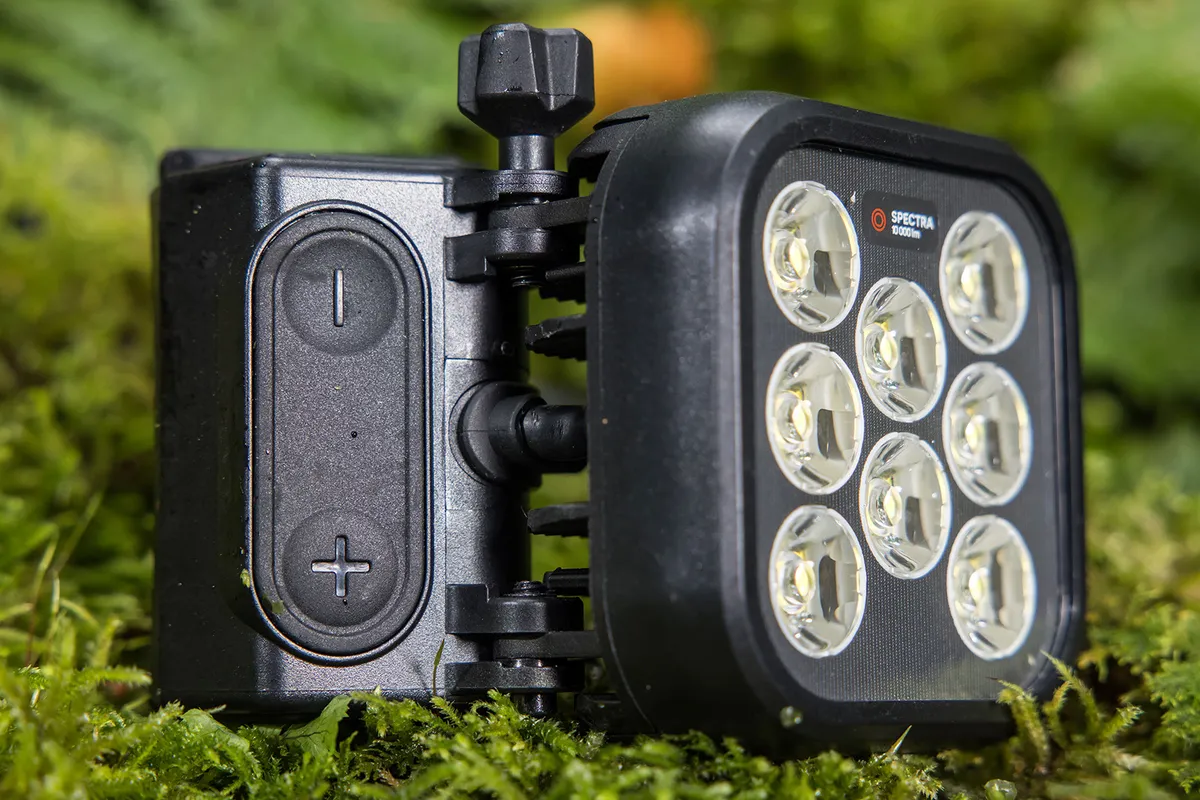
The battery pack has a charge indicator, although this is covered by the pouch when it’s installed. However, the remote also has a five-LED charge indicator.
A three-button wireless remote control (27g) is supplied with a wrist strap. There's also a battery pack extender cable.
With five constant-output modes, the Spectra A is claimed to run for three hours at full power, with a beam range of 310m. A second Spectra battery can be connected to extend run time.
The whole system is IPX5 water-resistant rated and boasts a two-year warranty.
Silva Spectra A performance
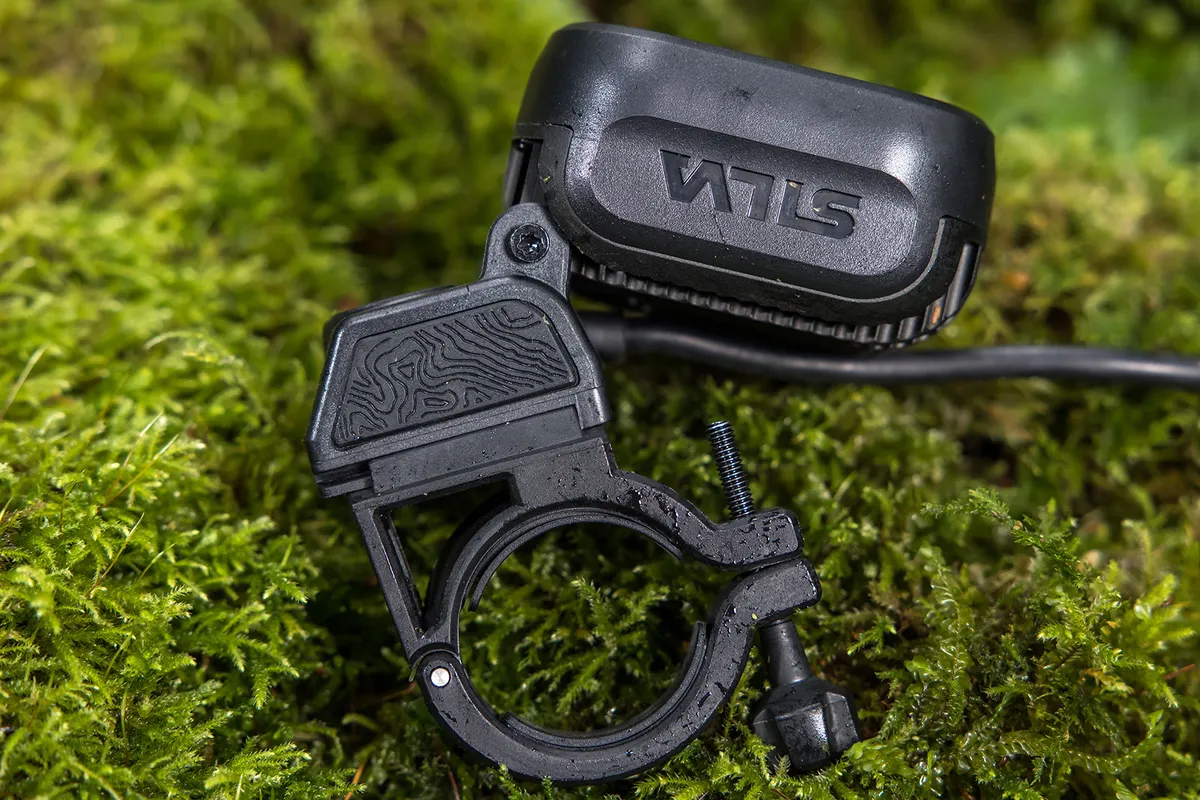
Fitting the Spectra A’s dedicated bar mount to the bike is simple. The tool-free design is easy to install and the clamp’s bolt screws in horizontally, which means you don’t have to fight gravity to keep it in place.
Its band clamp is relatively narrow (15mm), and the light is positioned directly in front of the stem, reducing bar clutter.
The remote is also easy to attach to the bars, thanks to the stretchy rubberised strap.
However, the large, flat oblong battery and its soft, smooth neoprene case are both unruly to mount on the bike frame thanks to its shape. It's tricky to keep in place too.
Contouring or shaping of the battery’s cover to a rounder form would improve mounting options.
Adding grippier silicone sections to the neoprene case would help it hold onto the bike’s tubes, preventing it sliding about on tapered sections of frame.
On the trail
The LEDs’ output feels close to Silva’s 10,000-lumen claims.
The Spectra generates a massive amount of light that’s thrown far down the trail ahead. This makes riding fast, technical trails confidence-inspiring and you’re never left wishing for more power or a longer reach.
That power is spread very evenly, too. There are no hotspots, bleached-out colours or high-contrast patches, making all its lumens useful.
The light's side-to-side spread improves performance further. Thanks to a broad light distribution, it can illuminate the exits of tight switchback turns and provide good on-trail context.

Delivering impressive visibility is the Spectra’s main highlight, helping you feel comfortable on all types of trails no matter their technicality.
Thanks to the LEDs’ gentle yellow hue, it’s very easy to see with. It tends to pick out the darker browns of trail surfaces rather than rich green flora. That’s no bad thing; searching out on-trail obstacles is a strain-free affair.
Its beam hue, power and spread are impressive, but don't make up for other, critical shortcomings.
While the remote is easy to mount and its functionality is obvious, it’s not possible to get it tight enough to stay put on the bars. Operation on rough terrain causes it to move around. A tighter rubber mounting band would certainly help and would be a relatively easy fix.
Its remote-based LED battery indicator – that displays the main battery’s life when the light is in use – is easy to see at a glance.
However, the remote’s rechargeable battery doesn’t last very long, and can’t be charged using the same cable or charger as the main battery light, relying on its own USB connection.
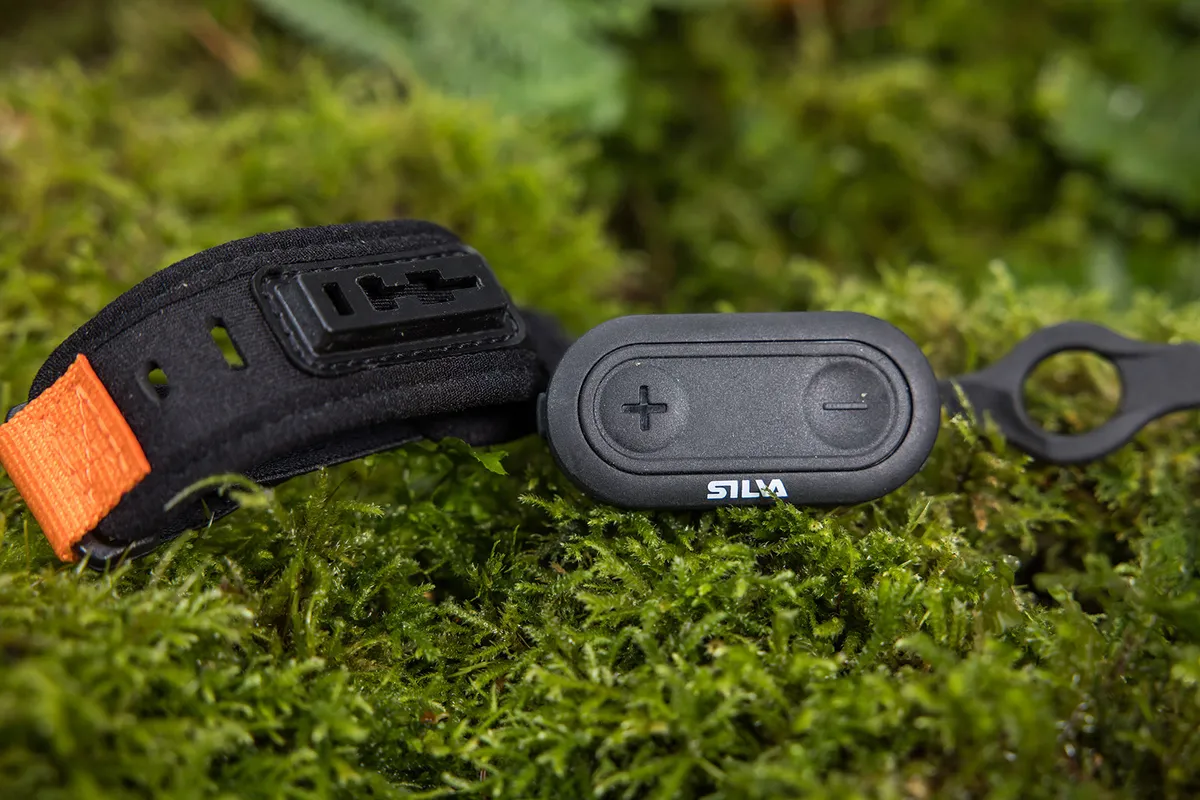
If your remote’s battery is depleted, the light can be controlled by its head unit’s forward-facing buttons. These are either above or below the head unit, depending on its mounting orientation on the bars.
These buttons are impossible to access on the move, and tricky if you’re stopped, ruling out quick and easy operation.
The head unit’s slide and clip mount interface lacks strength and quality. The small tab to keep it in place doesn’t apply enough force; bumps – not even big ones – shake the light from its ‘home’ position.
If your brake, gear or dropper cables push it from beneath, they can also dislodge it from its mount.
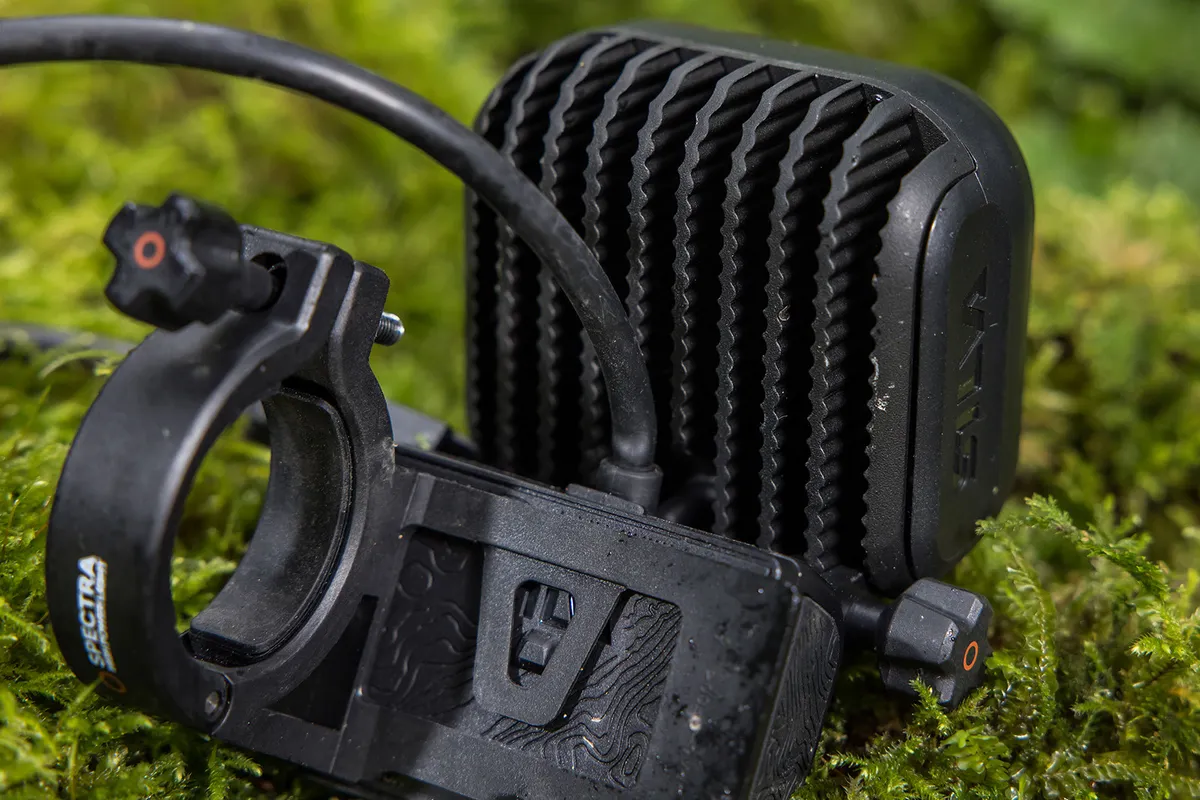
When the light’s beam starts shimmering and shaking, it’s time to stop because the head unit is no longer securely attached.
A small T15 Torx bolt and knurled knob anchor the light to its mounting pivot. These need to be done up very tightly to prevent it nodding on rough terrain, compounding the wobbles caused by the already shaky clip mount.
With no cowl on any side of the light, once you hit an incline, boost off a jump lip or lift the front wheel, light is shone directly into your eyes, momentarily dazzling you.
Finally, aggressive thermal throttling shuts the light down with little warning. After 10 to 15 minutes of high-paced, constant riding in 12°C temperatures, the light shut off completely.
Necessitating an emergency stop, I had to wait five minutes for it to cool sufficiently before it would turn back on.
While thermal throttling is a common problem for many lights, the lack of obvious warning prior to a full shutdown is dangerous. Had I been mid-air or darting through trees – rather than riding a relatively tame section of a trail centre – the consequences could have been dire.
How long does the Silva Spectra A’s battery last?
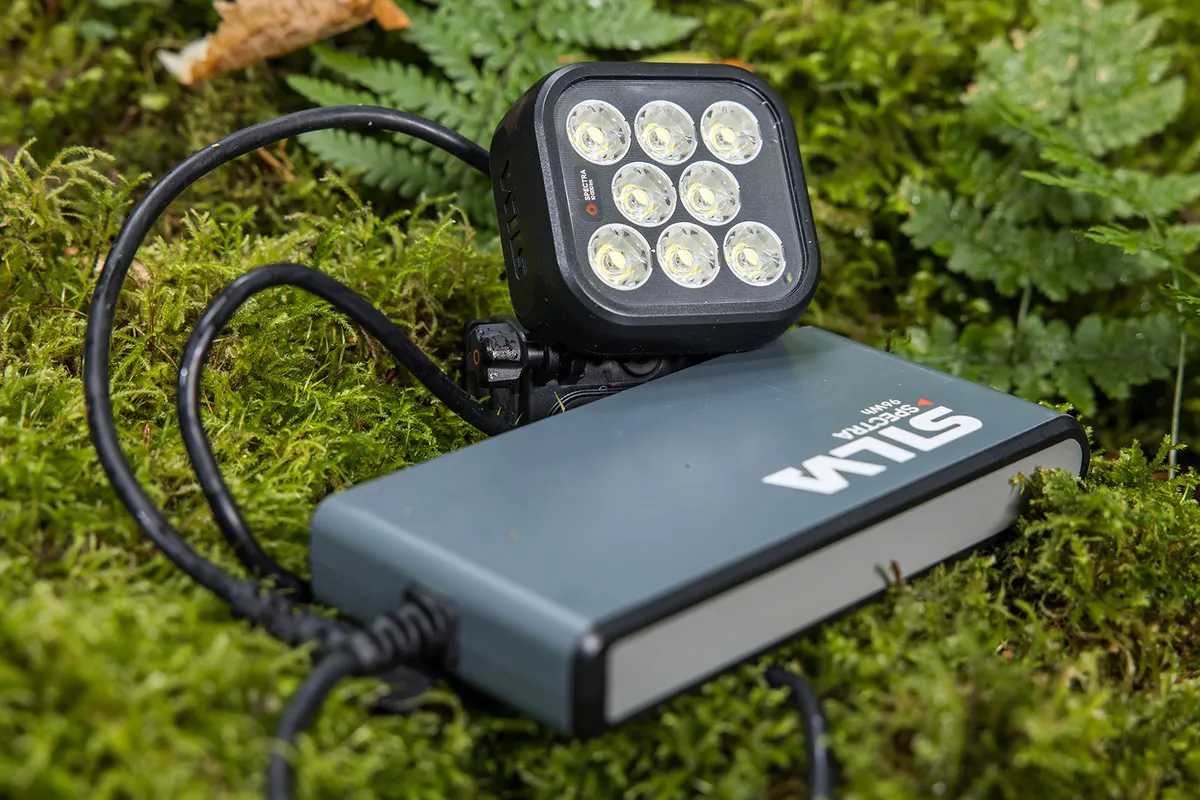
Set to its highest 10,000-lumen output, the Silva Spectra A’s battery lasted 73 minutes, which is 14 minutes longer than the brand’s -5°C ambient temperature claimed burn time, but less than its 20°C ambient temperature claimed run time of three hours.
Lowering the power output increases run time. Given the immense power of the lower-output modes, if you need to extend battery life but still ride technical trails, using the 2,500-lumen mode is advisable.
Silva Spectra A bottom line
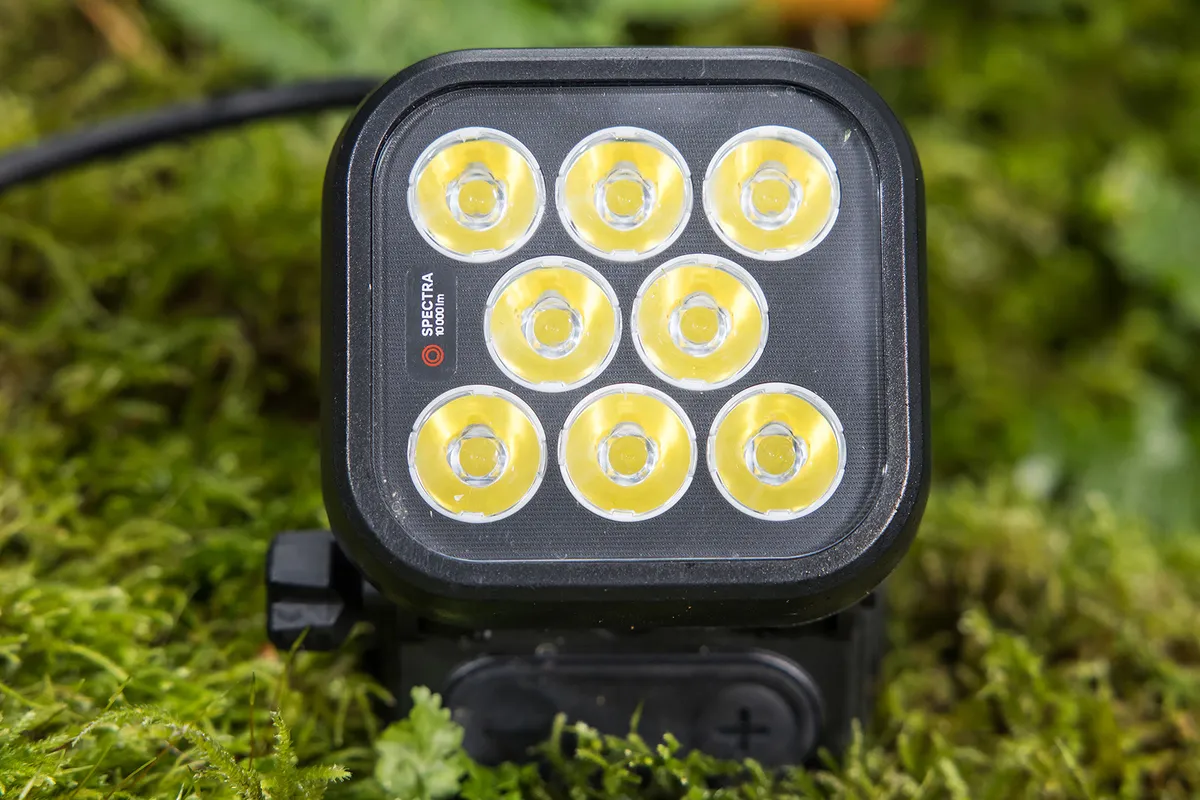
With shimmers of promise thanks to an impressively controlled array of high-powered LEDs, the Spectra A is let down by some crucial design flaws.
Its head unit and remote mounts are sub-standard, both in their design and functionality, leading to difficult operation and an unstable beam pattern once the light shakes free.
The chunky, hard-to-secure battery pack, while providing plenty of juice, isn’t well suited to mounting on frame tubes.
An aggressive thermal throttling protocol can create dangerous situations, given the warnings prior to total light shutdown aren’t obvious.
Add in the very expensive price, and there are more reasons to avoid the Spectra A than go for it.
How we tested | Mountain bike lights
We've tested nine sets of lights in the depths of night on a host of different trails – from flat-out trail centre loops through to tight and twisty natural singletrack. Our testing assessed how well they illuminate the terrain, to help you find the perfect option for your needs.
Lights on test
- Blackburn Countdown 1600
- Exposure MaXx-D MK15
- Gloworm X2 (G2.0)
- LifeLine Pavo Motion 3500
- Lumicycle Explorer 2 Enduro Pack
- Lupine SL MiniMax AF
- Magicshine Monteer 12000
- NiteRider Pro 2200 Race
- Silva Spectra A
Product
| Brand | Silva |
| Price | €800.00, £650.00, $800.00 |
| Weight | 901g |
Features
| Light type | front |
| Remote switch | yes |
| Features | Run time: 1.23hr (measured, max power) Water resistance: IPX5 |
| Output (lumens) | 10000 |
